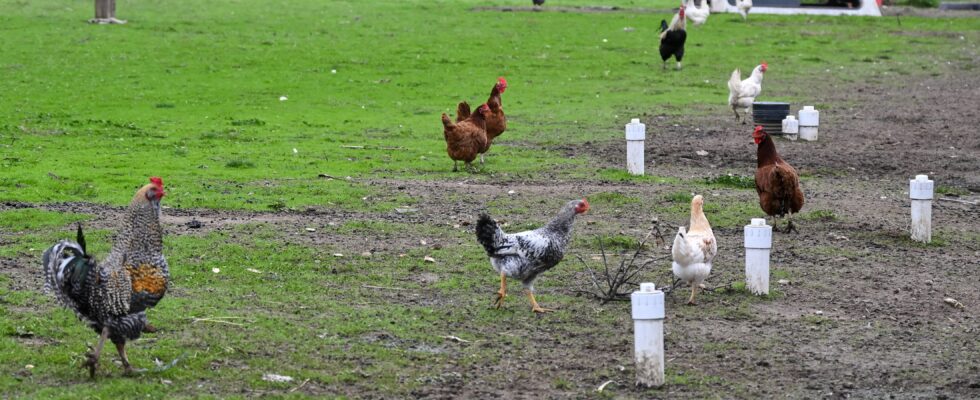Concerns about bird flu are growing. The first serious human case of avian flu in the United States carries a virus that may have mutated inside its body to adapt to human respiratory tract, American health authorities announced Thursday, December 26. The American Centers for Disease Prevention and Control (CDC) announced on December 18 that an elderly patient suffering from other pathologies was hospitalized in Louisiana in “critical condition” after being contaminated by the H5N1 virus.
According to sequencing released Thursday, a small part of the H5N1 virus found in this patient’s throat has genetic modifications that could make it more adapted to the human upper respiratory tract (from the nose to the larynx). They were “probably generated during virus replication in the patient,” the CDC said.
The CDC clarified that no transmission of this mutated virus has been identified. These changes have not been observed in contaminated birds, including those with which the patient may have been in contact in a farmyard.
“These mutations are worrying, but…”
Experts contacted by AFP said it was too early to determine whether these changes could allow the virus to spread more easily, or cause more serious cases in humans. The mutation in question constitutes “a necessary step for a virus to become more contagious,” explained Angela Rasmussen, virologist at the University of Saskatchewan, in Canada. “But I insist on the fact that it is not the only one” necessary, she added.
“RNA viruses are known to mutate inside their hosts, and these mutations are of course worrying,” responded Rebecca Christofferson, researcher at Louisiana State University. But “the good news is that there does not seem to be any evidence to suggest that the virus has become more transmissible, because no other cases have been associated with this one,” she said. .
Angela Rasmussen said the mutation could make it easier for the virus to enter cells, but further testing will need to be done in animals to confirm this. Genetic modifications have already been observed in the past in patients infected with avian flu and seriously ill, but have not yet resulted in an increase in the transmissibility of the virus to humans.
For Thijs Kuiken, of the Erasmus University Medical Center in the Netherlands, these changes could lead to less serious infections: the virus would become “more likely” to “infect the upper respiratory tract”, causing runny nose or soreness. throat, affecting the lower respiratory tract, and causing pneumonia. These observations therefore do not mean that we are getting closer to a “pandemic”, insisted Angela Rasmussen.
An increase in cases of avian flu among felines
In addition to the Louisiana patient, 65 mild cases of the disease have been detected in humans in the United States since the start of 2024, and others may have gone unnoticed, according to the CDC. Avian influenza A (H5N1) first appeared in 1996, but since 2020 the number of outbreaks in birds has exploded and an increasing number of mammal species have been affected.
For several months, the United States has been facing an epizootic – the equivalent of an epidemic in animals – of avian flu. The growing number of mammals infected with the disease worries experts. They fear that high circulation will facilitate a mutation of the virus which would allow it to pass from one human to another. This circulation of the virus increases the probability that it will mix with that of seasonal flu, risking triggering a process similar to those which led to the flu pandemics of 1918 and 2009, according to Angela Rasmussen.
Health authorities are also closely monitoring the increase in cases of bird flu among felines. In Oregon (northwest), a cat died after consuming raw animal food, which was confirmed by analyzes to be contaminated with the H5N1 virus. 20 felines infected with avian flu also died in a shelter in Washington state (northwest), a local animal rights association announced on Facebook. According to Angela Rasmussen, contaminated cats could expose their owners to a “risk” of contracting the disease during close contact.
